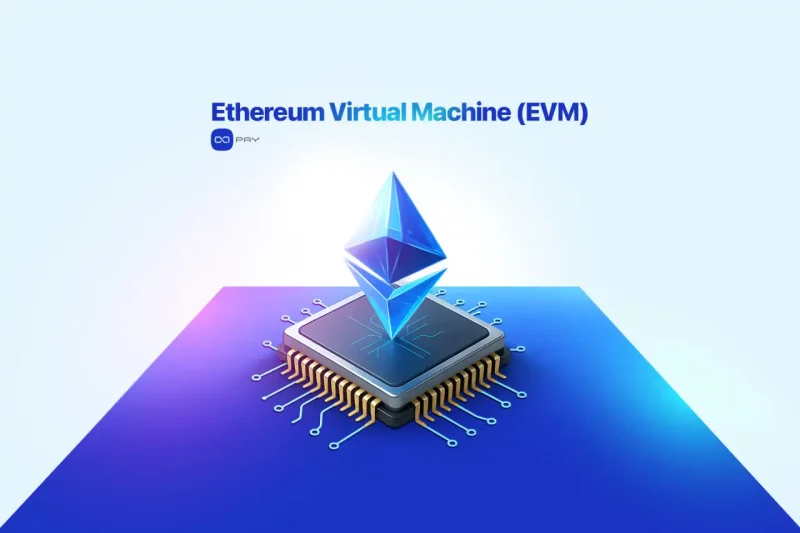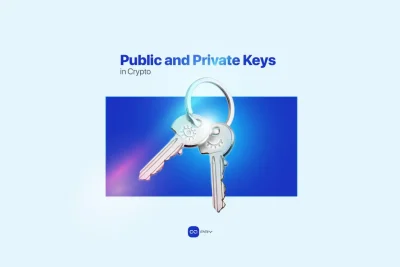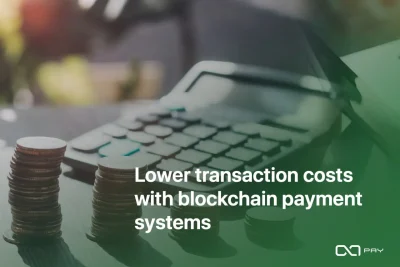¿Te has preguntado alguna vez por qué Ethereum impulsa mucho más que simples transacciones? Desde plataformas financieras globales hasta mercados de arte digital, organizaciones descentralizadas e incluso Pagos de Ethereum, La red permite sistemas que operan sin bancos ni intermediarios. Esto es posible gracias a algo más que su blockchain: es el mecanismo subyacente que convierte a Ethereum en una red programable. En este artículo, exploraremos cómo funciona la Máquina Virtual de Ethereum (EVM), por qué es importante y qué implica para el futuro de las aplicaciones descentralizadas.
¿Qué es la Máquina Virtual Ethereum (EVM)?
En esencia, la Máquina Virtual de Ethereum (EVM) es un entorno de software que se ejecuta en cada nodo de Ethereum. Actúa como una computadora global y descentralizada donde los programas (contratos inteligentes) se ejecutan exactamente como están escritos.
- Cada nodo de Ethereum ejecuta una copia idéntica de la EVM.
- Garantiza que los contratos y transacciones inteligentes siempre produzcan el mismo resultado en todas partes.
- Es Turing-completo, lo que significa que teóricamente puede realizar cualquier cálculo con suficientes recursos.
👉 Piensa en la EVM como el sistema operativo de Ethereum. Al igual que Windows o macOS ejecutan software en tu ordenador, la EVM ejecuta contratos inteligentes en la cadena de bloques de Ethereum.
Nota técnica: Arquitectura principal de la EVM
- Modelo de estado de EVM: El EVM separa el estado mundial, que realiza un seguimiento de todas las cuentas y su almacenamiento en un momento dado, desde el estado de la transacción, que es temporal y cambia durante la ejecución. Esto garantiza la coherencia en toda la red.
- Diseño basado en pilas: En lugar de registros, la EVM utiliza una pila de palabras de 256 bits. código de operación (ADD, MUL, SSTORE, etc.) inserta o extrae valores, creando un modelo de ejecución simple y uniforme en todos los nodos.
- Estado de la cuenta y del almacenamiento: Cada cuenta mantiene un saldo, un mientras tanto (un contador de transacciones), código de contrato y almacenamiento persistente. En cambio, la memoria es temporal y se borra después de cada ejecución, lo que la hace más barata pero no permanente.
👉 Estas características garantizan una ejecución determinista: entradas idénticas siempre producen resultados idénticos en toda la red.
¿Cómo funciona el EVM?
La Máquina Virtual Ethereum (EVM) no reside en una sola máquina, sino que se ejecuta simultáneamente en miles de ellas. nodos de Ethereum. Su función principal es procesar transacciones y contratos inteligentes de manera consistente en toda la red.
Cómo funciona la ejecución:
- Un usuario envía una transacción (por ejemplo, desplegando o interactuando con un contrato).
- La transacción contiene código (bytecode EVM) y Tarifas de gas.
- La EVM ejecuta el código paso a paso, consumiendo gas.
- Actualizaciones del estado de la cadena de bloques (saldos, almacenamiento, datos de contratos).
👉 El gas es como la factura de la luz en Ethereum. Sin gas, ninguna transacción ni contrato se ejecutará.
Nota técnica: Gas, memoria y almacenamiento
- Costos de gas: Cada operación de EVM consume gas. Aritmética simple (por ejemplo, AGREGARes barato, mientras que las operaciones de almacenamiento son caras. Por ejemplo, SSTORE (escritura en almacenamiento) puede costar miles de gasolina, mientras que CARGA (lectura desde el almacenamiento) Es más barato, pero sigue siendo significativo.
- Mecanismo de reembolso: Si un contrato libera memoria (por ejemplo, restableciendo una variable a cero), se reembolsa parte del gas. Esto incentiva a los desarrolladores a eliminar los datos no utilizados.
- Memoria frente a almacenamiento: La memoria es temporal, se reinicia tras cada transacción y su uso es más económico. El almacenamiento es permanente y se registra en la cadena de bloques, pero es mucho más costoso. Un diseño eficiente de contratos inteligentes suele implicar minimizar las escrituras en el almacenamiento.
Ejemplo: Consumo de gas de almacenamiento frente a consumo de gas de memoria
// SPDX-License-Identifier: MIT pragma solidity ^0.8.0; contract GasExample { uint256 public storedNumber; // almacenado en memoria (costoso) function useStorage(uint256 x) public { storedNumber = x; // cuesta miles de gas (SSTORE) } function useMemory(uint256 x) public pure returns (uint256) { uint256 temp = x; // almacenado solo en memoria (económico) return temp + 1; } }
En este ejemplo:
usarAlmacenamiento()Escribe un valor en el almacenamiento del contrato. Esto activa la costosa operación.Tienda Soperación, que puede costar 20.000 de gasolina o más.usarMemoria()La variable se mantiene en memoria temporal únicamente durante la ejecución, lo cual es mucho más económico, y se reinicia después de la llamada a la función.
👉 Los desarrolladores suelen optimizar los contratos minimizando las escrituras en el almacenamiento y utilizando la memoria siempre que sea posible.
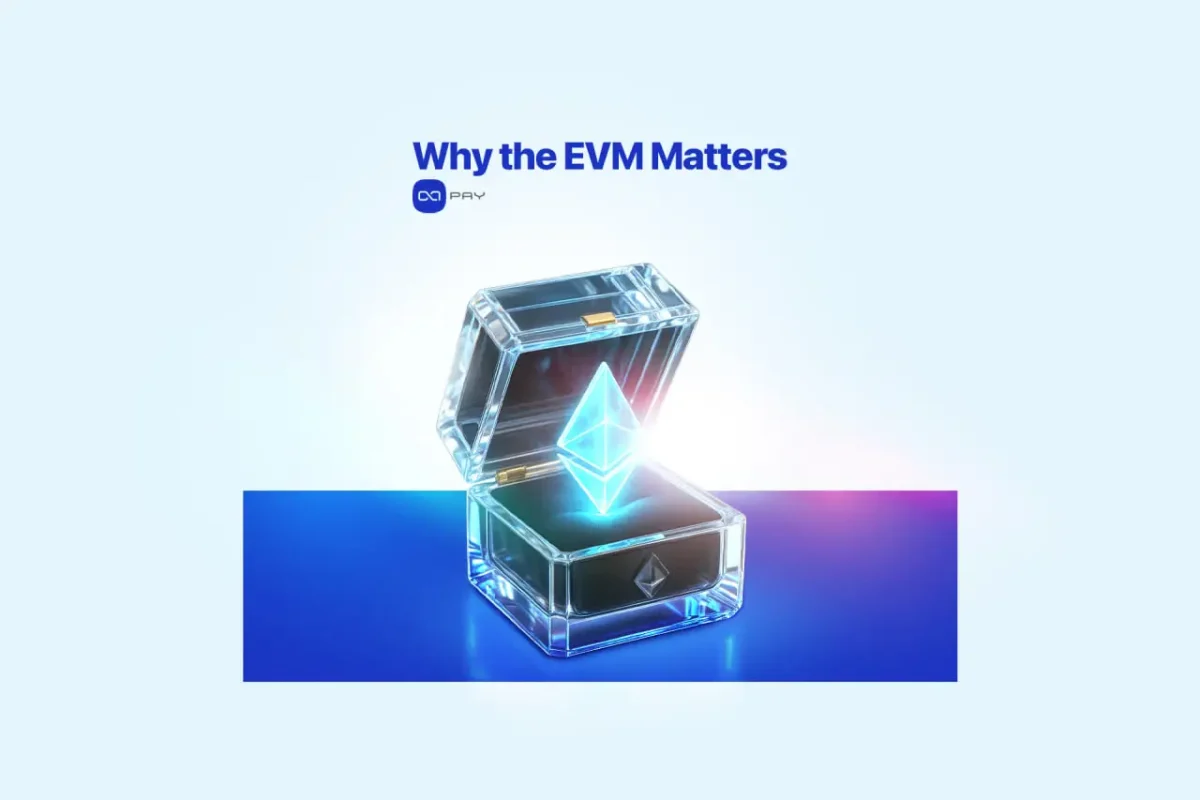
¿Por qué es importante el EVM?
La Máquina Virtual de Ethereum (EVM) es importante por tres razones:
- Descentralización – Ninguna autoridad única controla la ejecución; esta se hace cumplir por consenso.
- Seguridad – Cada transacción es verificada por miles de nodos, lo que hace que el fraude sea prácticamente imposible.
- Programabilidad Los desarrolladores pueden construir desde protocolos DeFi hasta NFT sobre Ethereum.
👉 La fiabilidad de la EVM garantiza que los contratos y los procesos automatizados se ejecuten exactamente como se pretende, ya sea para transacciones financieras, organizaciones descentralizadas o aplicaciones a gran escala.
⚙️ Nota técnica
La ejecución en la EVM es determinista. Con el mismo código de contrato, entradas y estado, cada nodo de la red llegará exactamente al mismo resultado. Esto garantiza la consistencia, evita disputas y constituye la base del diseño sin confianza de Ethereum.
Contratos inteligentes y la EVM
Los contratos inteligentes son programas almacenados en la cadena de bloques. La EVM es la máquina que los ejecuta.
Ejemplos de casos de uso:
- PagosLos fondos se liberarán únicamente después de que se cumplan las condiciones.
- DeFiPréstamos, créditos o transacciones sin intermediarios.
- NFTsCreación y transferencia segura de activos digitales únicos.
- DAOsReglas para organizaciones codificadas en contratos inteligentes.
👉 Un contrato inteligente es como una máquina expendedora: insertas dinero, pulsas un botón y te entrega el producto, sin necesidad de cajero.
Nota técnica: Códigos de operación y ejecución de bajo nivel
- De bytecode a opcodes: Cuando se compila un contrato inteligente (por ejemplo, desde Solidez), se convierte en bytecode de la EVM. La EVM lee este bytecode como una secuencia de códigos de operación, instrucciones de bajo nivel como ADD, SSTORE, o LLAMAR.
- Ejecución paso a paso: Cada código de operación interactúa con la pila de 256 bits, la memoria y el almacenamiento de la EVM. Por ejemplo, ADD extrae dos valores de la pila y guarda el resultado, mientras que SSTORE escribe un valor de forma permanente en el almacenamiento del contrato.
- Manejo de errores con REVERT: En Código de operación REVERT Permite que una transacción falle de forma segura. En lugar de aplicar parcialmente los cambios, revierte todas las modificaciones de estado al punto anterior al inicio de la ejecución, garantizando así la atomicidad y la seguridad.
👉 Al analizar los códigos de operación, los desarrolladores pueden optimizar los contratos para reducir los costos de gas y crear medidas de seguridad más sólidas contra las vulnerabilidades.
Blockchains compatibles con EVM
Una de las mayores ventajas de la Máquina Virtual de Ethereum (EVM) es que no se limita a Ethereum. Con el paso de los años, muchas otras cadenas de bloques han adoptado la compatibilidad con la EVM, lo que significa que los contratos inteligentes escritos para Ethereum a menudo se pueden implementar en estas redes con pocas o ninguna modificación.
Para los desarrolladores, esto significa que pueden usar las mismas herramientas., Máscara meta, Remix IDE, casco, Trufa, en múltiples ecosistemas. Para las empresas y los usuarios finales, esto significa acceso a más opciones, confirmaciones más rápidas y tarifas más bajas, todo ello sin tener que aprender sistemas completamente nuevos.
Blockchains compatibles con EVM por categoría
| Cadena de bloques | Modelo de seguridad | Descripción |
|---|---|---|
| Red principal de Ethereum | L1 – Seguridad nativa de Ethereum | La red más segura y ampliamente adoptada, aunque a menudo con tarifas más elevadas. |
| Cadena BNB | L1 – cadena independiente | Rápido y económico, ampliamente utilizado en DeFi y aplicaciones de consumo. |
| Avalancha (cadena C) | L1 – cadena independiente | Diseñado para un alto rendimiento y una finalización rápida, con una fuerte actividad DeFi. |
| Fantasma | L1 – cadena independiente | Ultrarrápida y de bajo coste, ideal para aplicaciones en tiempo real. |
| Polígono (PoS) | Cadena lateral – parcialmente dependiente de Ethereum | Una solución de escalado popular con tarifas muy bajas y una fuerte adopción por parte del ecosistema. |
| Arbitro & Optimismo | L2 – rollups optimistas asegurados por Ethereum | Implementaciones de Ethereum Layer 2 que reducen las comisiones al tiempo que preservan la seguridad a nivel de Ethereum. |
| Base (por Coinbase) | L2 – rollup optimista asegurado por Ethereum | Una capa 2 desarrollada con el respaldo de Coinbase, que brinda fácil acceso a millones de usuarios de exchanges. |
| Era de zkSync & StarkNet | L2 – zk-rollups protegidos por Ethereum | zk-Rollup ofrece soluciones que brindan bajos costos y sólidas garantías de seguridad. |
| Línea (por ConsenSys) | L2 – zkEVM protegido por Ethereum | Una aplicación zkEVM respaldada por el equipo detrás de MetaMask e Infura. |
| Celo | L1 – cadena independiente | Una cadena de bloques diseñada para dispositivos móviles y optimizada para micropagos e inclusión financiera. |
| Cadena de Gnosis (xDai) | L1 – cadena independiente | Una de las primeras cadenas de bajo coste diseñadas para aplicaciones prácticas. |
| Cronos (Crypto.com) | L1 – cadena independiente | Una cadena compatible con EVM centrada en DeFi, NFT e integraciones para el consumidor. |
| Rayo de luna (Lunares) | Parachain – asegurada por la cadena de retransmisión Polkadot | Integra la funcionalidad EVM en el ecosistema de Polkadot. |
| Kava EVM | L1 – cadena independiente | Combina protocolos DeFi con compatibilidad total con EVM. |
| Armonía | L1 – cadena de bloques fragmentada | Una cadena de bloques fragmentada que ofrece bajas comisiones y alta velocidad. |
👉 Conclusión clave:
La compatibilidad con la EVM permite a los desarrolladores “escribir una vez, implementar en cualquier lugar”, posibilitando que un único contrato inteligente se ejecute en docenas de redes. Esta interoperabilidad y la reutilización de herramientas son algunas de las principales razones por las que la EVM se ha convertido en el estándar dominante en el desarrollo de blockchain.
Comparación de las principales cadenas de bloques compatibles con EVM
Si bien los modelos de seguridad y las categorías arquitectónicas definen el funcionamiento de estas cadenas de bloques, a las empresas y a los desarrolladores también les preocupa el rendimiento práctico. La velocidad, las comisiones por transacción y las compensaciones de red suelen determinar qué cadena se adapta mejor a aplicaciones específicas. La siguiente tabla compara las principales cadenas de bloques compatibles con EVM en términos de finalidad, costes típicos y sus principales ventajas e inconvenientes.
| Cadena de bloques | Velocidad media (finalidad) | Tarifas típicas | Puntos fuertes clave | Compensaciones |
| Red principal de Ethereum | ~3–5 min (12 confs) | $3–$20 (alta carga) | Máxima seguridad, máxima descentralización, máxima adopción | Tarifas elevadas, menor rendimiento |
| Polígono (PoS) | 30–60 segundos | <$0.10 | Rápido, económico, amplio ecosistema, ideal para microtransacciones. | Depende en parte de la seguridad de Ethereum. |
| Cadena BNB | ~3–5 segundos | $0.05–$0.20 | Muy rápido, bajas comisiones, enorme adopción en el sector minorista y DeFi | Conjunto de validadores más centralizado |
| Avalancha (cadena C) | ~1–2 segundos | <$0.50 | Alto rendimiento, crecimiento de DeFi y NFT | Menos descentralizado que Ethereum |
| Fantasma | ~1–2 segundos | <$0.01 | Ultrarrápida, ideal para juegos y comercio minorista | Ecosistema más pequeño, menor liquidez |
| Arbitraje (L2) | ~1–2 minutos | $0.10–$0.50 | Seguridad al nivel de Ethereum, gran adopción | Retrasos en los retiros con diseño de acumulación |
| Optimismo (L2) | ~1–2 minutos | $0.10–$0.50 | Misma seguridad que Ethereum, DeFi en auge | Ecosistema limitado frente a la red principal de Ethereum |
| Base (L2) | ~15–30 segundos | <$0.10 | Con el respaldo de Coinbase, fácil acceso para el usuario | Aún en fase inicial, menor liquidez |
| Era de zkSync | ~1–2 minutos (zk-rollup) | <$0.10 | Seguridad robusta, tecnología ZK, bajo costo | Madurez limitada del ecosistema |
| Línea (zkEVM) | ~1–2 minutos | <$0.10 | Desarrollado por ConsenSys, se integra con MetaMask. | Ecosistema temprano, herramientas en evolución |
| Cronos | ~5–6 segundos | <$0.50 | Enfoque en el consumidor, adopción de NFT y DeFi | Base de desarrolladores más centralizada y más pequeña |
Limitaciones del EVM
A pesar de sus puntos fuertes, la Máquina Virtual Ethereum (EVM) tiene limitaciones:
- Escalabilidad – El número de transacciones por segundo está limitado.
- Tarifas de gas – Los costes pueden dispararse durante la congestión.
- Complejidad – Redactar contratos seguros es difícil; los errores pueden ocasionar grandes pérdidas.
Nota técnica: Más allá de la EVM – eWASM
Los investigadores de Ethereum están trabajando en eWASM (con sabor a Ethereum) WebAssembly), que eventualmente podría reemplazar al EVM.
- Admite más lenguajes de programación.
- Ofrece mayor eficiencia.
- Ethereum podría escalarse para manejar cargas de trabajo mayores.
Por ahora, la EVM sigue siendo la columna vertebral de Ethereum y su ecosistema.
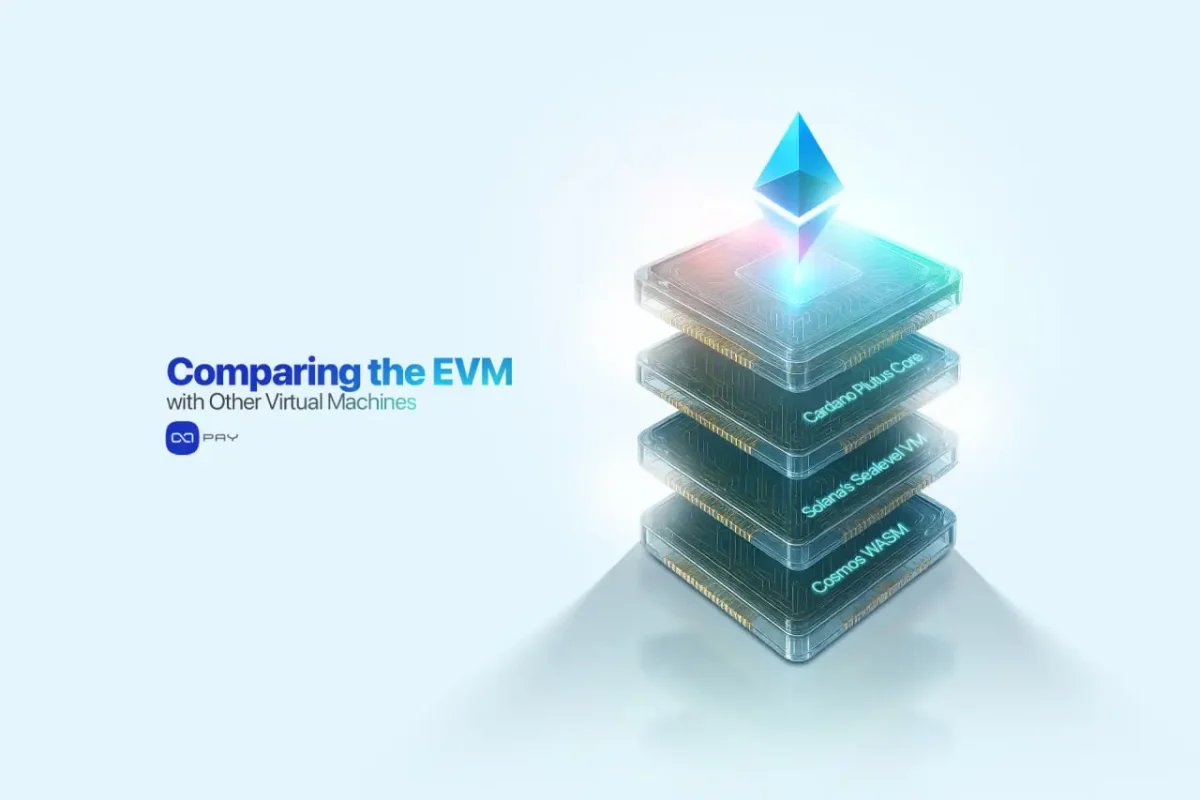
Comparación de la EVM con otras máquinas virtuales
Aunque la Máquina Virtual de Ethereum (EVM) domina el panorama actual de los contratos inteligentes, no es la única máquina virtual que impulsa los ecosistemas blockchain. Existen varias alternativas que ofrecen diferentes ventajas e inconvenientes en cuanto a velocidad, escalabilidad y flexibilidad de programación.
- Máquina virtual de nivel del mar (SVM) de Solana: Ejecuta miles de transacciones en paralelo, lo que permite un rendimiento extremadamente alto. Ideal para aplicaciones de alta frecuencia como el trading. Compensación: Requiere hardware potente y opera con un conjunto de validadores más pequeño, lo que reduce la descentralización en comparación con Ethereum.
- Cosmos WASM (CosmWasm): Basado en WebAssembly (WASM), lo que permite a los desarrolladores escribir contratos en lenguajes como Óxido. Altamente modular e interoperable dentro del ecosistema Cosmos. Compensación: Liquidez fragmentada y menor adopción en comparación con Ethereum.
- Mover máquina virtual (Apto & Sui): Diseñado en torno al lenguaje Move, haciendo hincapié en la seguridad de los recursos y la ejecución en paralelo. Compensación: Nuevo ecosistema con herramientas limitadas en comparación con EVM.
- CERCA DE VM: Una máquina virtual basada en WebAssembly diseñada para la escalabilidad mediante particionamiento, que admite múltiples lenguajes. Compensación: Ecosistemas DeFi y NFT más pequeños en comparación con Ethereum.
- Sustrato de paridad / Tinta! (Lunares): Un marco de trabajo flexible que permite a los desarrolladores crear cadenas de bloques y contratos inteligentes personalizados. Compensación: Fragmentación y complejidad en la adopción entre cadenas.
- Núcleo de Cardano Plutus: Construido sobre los principios de Haskell con un modelo UTXO extendido Para contratos inteligentes. Ofrece verificación formal para una alta seguridad. Compensación: más complejo de programar y crecimiento más lento del ecosistema.
👉 Cada una de estas alternativas pone de relieve una contrapartida: mientras que EVM favorece la fiabilidad y la coherencia, otras priorizan la velocidad, la paralelización o la flexibilidad, a menudo a costa de la simplicidad o la adopción.
Aplicaciones reales del EVM
- DeFi: Miles de millones de dólares en transacciones diarias dependen de contratos EVM para préstamos, depósitos e intercambios descentralizados.
- Mercados de NFT: Plataformas como Mar abierto depender de Normas ERC (ERC-20, ERC-721, ERC-1155) que son aplicadas de manera consistente por el EVM.
- Pagos transfronterizos: Los contratos inteligentes automatizan transacciones sin confianza y sin fronteras, sin intermediarios.
- Soluciones empresariales: Las cadenas de suministro, la verificación de identidad y los acuerdos digitales utilizan el EVM para lograr transparencia y automatización.
⚙️ Nota técnica
El sistema de eventos y registros de la EVM es crucial para las aplicaciones fuera de la cadena. Los registros emitidos durante la ejecución del contrato permiten a las billeteras, exploradoresy dApps para realizar un seguimiento de la actividad sin sobrecargar el estado de la cadena de bloques.
Conclusión
La Máquina Virtual de Ethereum (EVM) representa un punto de inflexión en la historia de la tecnología blockchain, demostrando que las redes descentralizadas pueden ir más allá de las simples transacciones para soportar aplicaciones complejas. Su diseño equilibra seguridad, consenso global y programabilidad, creando la base de la economía descentralizada actual y abriendo la puerta a innovaciones que se extienden mucho más allá de Ethereum.
Preparado para aceptar pagos con criptomonedas? OxaPay Proporciona una plataforma rápida, segura y de bajo coste para que las empresas reciban activos digitales en todo el mundo, de forma sencilla, fiable y sin barreras.
